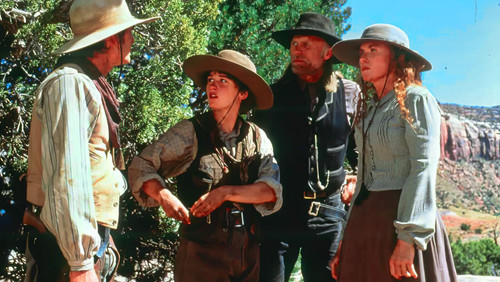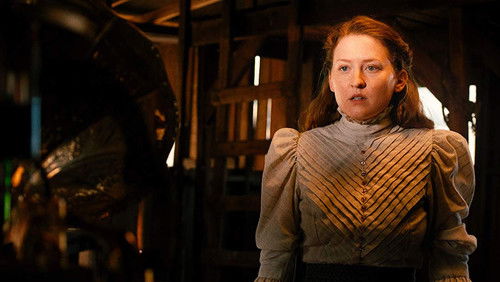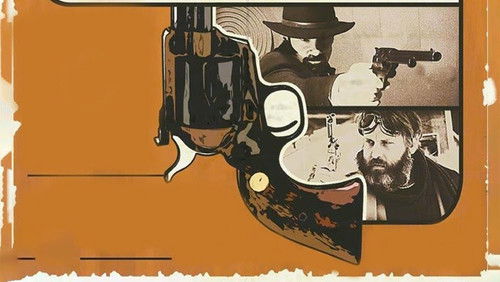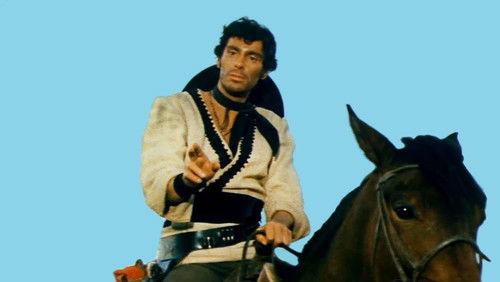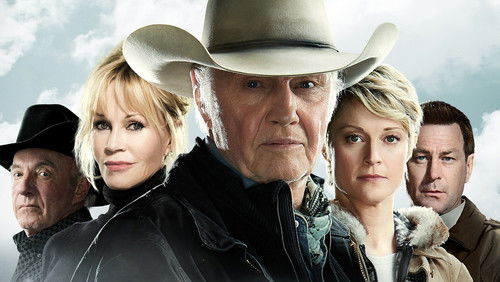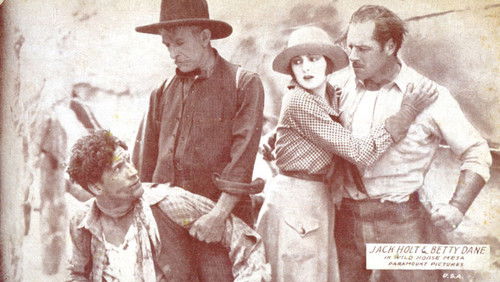Für ein paar Dollar mehr (1965)
19KFür ein paar Dollar mehr: Directed by Sergio Leone. With Clint Eastwood, Lee Van Cleef, Gian Maria Volontè, Mara Krupp. Two bounty hunters with the same intentions team up to track down a Western outlaw.
“u0026quot;For a Few Dollars More,u0026quot; the middle installment of the iconic Sergio Leone/Clint Eastwood u0026quot;Dollarsu0026quot; trilogy, is the most brutal of all three films. Throughout the movie, ruthless bounty hunters, all of who seem to have no respect for human life, often perform cold-blooded murders. The bounty hunters use the u0026quot;wild westu0026quot; as a free range: they track, they kill, and they collect.u003cbr/u003eu003cbr/u003eOne of these bounty hunters happens to be The Man with No Name (Eastwood), who returns to us now after his introduction in u0026quot;A Fistful of Dollars,u0026quot; which was the first movie of the trilogy. (An interesting observation is that the u0026quot;man with no nameu0026quot; actually does have a name in each installment — here, his name is Manco, but this is a fact that is often forgotten.)u003cbr/u003eu003cbr/u003eThe Man with No Name/Manco is on a mission to find the criminal Indio (Gian Maria Volonté), whose capture is worth a large sum of money. It is quickly set up that local law enforcement is weak. Sheriffs are cowards. Only the vicious bounty hunters know how to drag in the criminals: dead or alive. Along for the journey is a fellow bounty hunter named Mortimer (Lee Van Cleef), whose own reasons for seeking the man differ from Mancou0026#39;s. At first, the two killers go their own separate ways, and then decide to team up together and improve their chances of finding Indio — despite the fact that their intentions for his capture are different.u003cbr/u003eu003cbr/u003eNot only are the two menu0026#39;s intentions different, but also their methods. Mortimer is a ruthless, cold-blooded murderer whose self-confidence is revealed through his barbaric actions. Manco, the hero, is less of a murderer and more of a law enforcer. Leone quickly sets this up through a sequence of shots: Mortimeru0026#39;s introduction, for example, begins with his search for a criminal, which finally comes to a finish as Mortimer confronts the man (who is hiding in a brothel). His foe manages to escape through a window, leaping onto a horse and galloping away through town. The images that follow reveal an insight into Mortimeru0026#39;s own self-confidence and startlingly calm nature.u003cbr/u003eu003cbr/u003eMancou0026#39;s appearance is even more dramatic. He tracks down his own victim, and corners him in a saloon, only to see three cowboys appear out of nowhere and block off all exits. In one quick motion he swings around and fires three successive shots, each bullet finding its target.u003cbr/u003eu003cbr/u003eHere it is established that Manco is an underdog; therefore, our storyu0026#39;s hero. He isnu0026#39;t as ruthless as Mortimer (who mercilessly picks his prey off from a distance) and his actions are somewhat admirable. The cowboys who tried to kill him were the bad guys. Manco was the good guy.u003cbr/u003eu003cbr/u003eIts lesser admirers often describe the film as being u0026quot;too longu0026quot;. Itu0026#39;s true that the film contains some unnecessary scenes, and these are often dragged out for dramatic effect — but that is the point. The movie, directed by one of cinemau0026#39;s most ambitious and visionary directors (Sergio Leone, 1929 – 1989), is all about long passages of close-ups and wide-lense shots. Along with its predecessor and particularly its sequel, the u0026quot;Dollarsu0026quot; trilogy revolutionized the derogatory u0026quot;spaghetti westernu0026quot; description. In the years to come, Hollywood would actually aim to create films similar to the u0026quot;Dollarsu0026quot; movies — all of which were inferior. The entire u0026quot;Dollarsu0026quot; trilogy has such scope, and ambition, that its Hollywood counterparts pale in comparison.u003cbr/u003eu003cbr/u003eLeoneu0026#39;s direction is magnificent and would later inspire — of all people — Quentin Tarantino (whose u0026quot;Kill Billu0026quot; movies owe something to the u0026quot;Dollarsu0026quot; trilogy). Long, wide lenses and extreme close-ups only accentuate the fear of the men. There is a particular sequence of shots that clips back and forth between Mortimer and a wanted notice pinned to the exterior of a building. Leone slowly builds up the back-and-forth shots until they burst into a pattern of super-speed images, distinctly closed with the sound of gunshots. Itu0026#39;s this sort of blazing, distinct style that makes the film so infectious and enjoyable.u003cbr/u003eu003cbr/u003eThe acting cannot be criticized, although the English dubbing is sometimes rather laughable. Eastwood is one of the only actors whose voice is not dubbed — but he rarely speaks. His face does all the talking. Lee Van Cleef (who was re-cast by Leone as a separate character in u0026quot;The Good, the Bad and the Uglyu0026quot;) manages to turn Mortimer into one of the quintessential bad guys of cinema. Although the dubbing can occasionally detract from the flow of scenes and dialogue, the two lead performances by Eastwood and Van Cleef more than compensate for this slight flaw.u003cbr/u003eu003cbr/u003eHollywood was cautious about releasing u0026quot;Dollars.u0026quot; Eastwood, known for his role in the television series u0026quot;Rawhide,u0026quot; was the only marketable star. The director was an unknown Italian with no commercial successes. As its predecessor before it, u0026quot;For a Few Dollars Moreu0026quot; was delayed release in the States, where it was deemed u0026quot;unworthy.u0026quot;u003cbr/u003eu003cbr/u003eHowever, the movie was a huge success in Italy, in particular; Clint Eastwood quickly gained a cult fan base overseas, but it was not until May 1967 — after the US release of u0026quot;The Good, the Bad and the Uglyu0026quot; — that u0026quot;For a Few Dollars Moreu0026quot; and its predecessor would open to critical accolade and deserved celebration in the United States. Now, almost forty years later, itu0026#39;s still a fascinating piece of classic cinema.”
